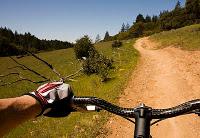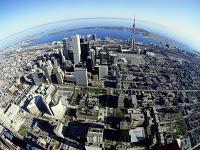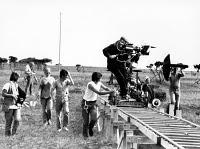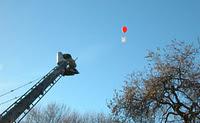 Point Of view Shots(P.O.V): An point of view shot is nothing but explaining something from a character perspective. And helps the audience to interact with the character on the screen. Usually an P.O.V shot begins with a character looking off screen after that we will cut to the object the character is looking at. Editing plays a very important role in film making.
Point Of view Shots(P.O.V): An point of view shot is nothing but explaining something from a character perspective. And helps the audience to interact with the character on the screen. Usually an P.O.V shot begins with a character looking off screen after that we will cut to the object the character is looking at. Editing plays a very important role in film making. Over The shoulder Shot: This kind of shot will be usually used in a conversation scene where two people converse. For example, if u going to shoot a scene involving your male lead and female lead sitting opposite to each other and conversing a camera will be placed above the character's shoulder to shoot the other. Here, partially shoulder comes into the frame. If u have a doubt please have a look at the video. Below i am posting a pic for the sack of understanding.
Over The shoulder Shot: This kind of shot will be usually used in a conversation scene where two people converse. For example, if u going to shoot a scene involving your male lead and female lead sitting opposite to each other and conversing a camera will be placed above the character's shoulder to shoot the other. Here, partially shoulder comes into the frame. If u have a doubt please have a look at the video. Below i am posting a pic for the sack of understanding.Reverse Angle: This is a very important shot to be focus with, and there is some specialty for this shot in film making. Usually, when you frame a scene there are some basic rules to be followed by any cameramen are a cinematographer. One of such rule is 180 Degree Rule. I will be explaning all this shot composition rules in my next posts. For now, u shot know that Reverse Angle Shot violates 180 Degree rule. This Reverse Angle shot is just similar to a over the shoulder shot which will be usually used for conversation scenes. Reverse angle video is available in the videos just have a look. Camera will be placed on the opposite side of each character and in editing we can give a feeling to the viewer that your characters are really conversing infront of him.
Handheld Shots: Camera will be handled with the hands as the title reflects and as a result the shot will be shaky, jerky which brings a raw effect to the viewer. This shot gives an real effect that the viewer will feel that he is also a part of the movie and not watching it from an isolated place.
 Bird's Eye View Shot: This just an unnatural angle just like a over the head shot or an Arial shot.At first the viewer will find difficult to find any object because of a strange angle created by the camera but it will create a feeling to the viewer that he is watching all the action from the top. Usually Alfred Hitchcock movies are best examples for these kind of shots.
Bird's Eye View Shot: This just an unnatural angle just like a over the head shot or an Arial shot.At first the viewer will find difficult to find any object because of a strange angle created by the camera but it will create a feeling to the viewer that he is watching all the action from the top. Usually Alfred Hitchcock movies are best examples for these kind of shots. Tracking Shots: As the name suggets these kind of shots are usually used for following the subjects while on the move or in motion. Usually these kind of scenes can be shot with the help of dollys are trolleys following the subject. For example, if u want to show if two people are walking this shot will be useful. Camera movement can be from any where from back,side and front ect.,
Tracking Shots: As the name suggets these kind of shots are usually used for following the subjects while on the move or in motion. Usually these kind of scenes can be shot with the help of dollys are trolleys following the subject. For example, if u want to show if two people are walking this shot will be useful. Camera movement can be from any where from back,side and front ect., Crane Shots: A crane shot is nothing but a dolly shot in air. Many of u know what a crane is and how it look like. A heavy metallic piece will be place where a camera will be attached to it and this piece will help in the free movement of the camera to follow the object or the subject. A skilled operator balances the crane.
Crane Shots: A crane shot is nothing but a dolly shot in air. Many of u know what a crane is and how it look like. A heavy metallic piece will be place where a camera will be attached to it and this piece will help in the free movement of the camera to follow the object or the subject. A skilled operator balances the crane.Eye Level Shot: This is just an neutral shot. Camera will be placed in such a way that the viewer is observing the scene. For example, the actors faces will be leveled to focus. The camera will be placed exactly to the head level i.e five to six feet from the ground.
Aerial Shot: I think u people are familiar with this else this is nothing but an extension to a crane shot. But instead of a crane here a helicopter will be used and will be shot from an height to give the viewer the topography of the setup from an height. A chopper can go anywhere, where as a crane have some limitations.

